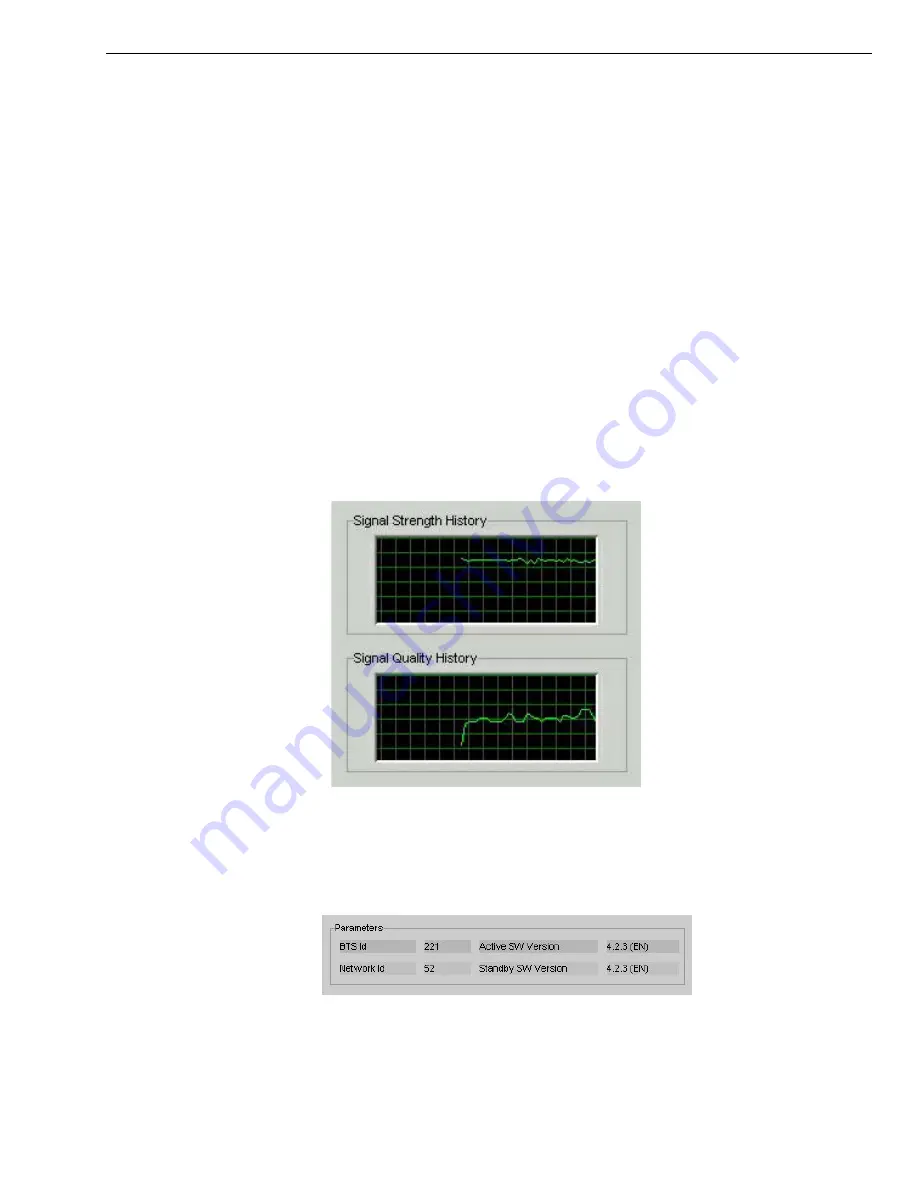
Navini Networks, Inc.
Ripwave Wireless Broadband Access Card User’s Guide
Navini Networks, Inc.
Ripwave Wireless Broadband Access Card User’s Guide
Page 21
060210_pv1.7_Ripwave Wireless Broadband Access Card User’s Guide_40-00292-00d(4.4.2)
The Signal Strength and
Signal Quality Bars,
continued
How to Increase
the Strength and
Quality of the
Signal
The History Graphs
The Parameters
to 13 but less than or equal to 21. Red lines indicate a weak signal
or an SNR less than 13.
To increase the strength and quality of the signal, change the
location of the PC in which the Card is inserted. Try moving it
closer to a window, to a higher location, away from other wireless
devices (microwave ovens, cordless phones), and away from metal
objects (shelves, file cabinets). As you reposition your PC, watch
the Signal Strength and Quality bars on the NavDiag screen. Place
your PC in the location where you receive the most green signal
strength and quality bars.
The History graphs plot the change in signal strength and signal
quality over time. The graphs cover the last minute and are updated
every second. Read the graphs from right to left. The right side of
the graph represents the most recent status of your Card.
At the bottom of the Connection Status screen are four parameters.
These parameters are BTS ID, Network ID, Active SW Version,
and Standby SW Version.
The BTS ID indicates the BTS to which the Card is currently
synchronized. The Network ID indicates the network in which
the Card is operating. Active SW Version and Standby SW Version
Page 21
060210_pv1.7_Ripwave Wireless Broadband Access Card User’s Guide_40-00292-00d(4.4.2)






























